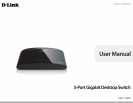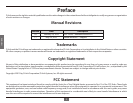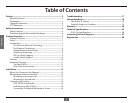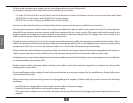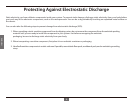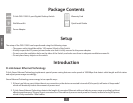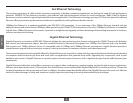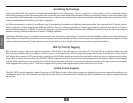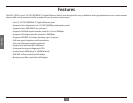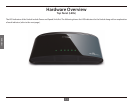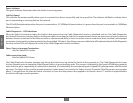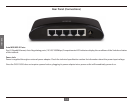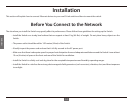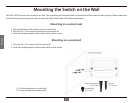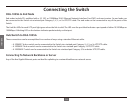
ENGLISH
9
Switching Technology
Switches provide full-line speed and dedicated bandwidth for all connections. This is in contrast to hubs, which use the traditional shared
networking topology, where the connected nodes contend for the same network bandwidth. When two switching nodes are communicating, they
are connected with a dedicated channel between them, so there is no contention for network bandwidth with other nodes. As a result, the switch
reduces considerably, the likelihood of trac congestion.
ForEthernetnetworks,aswitchisaneectivewayofeliminatingtheproblemofchaininghubsbeyondthe“two-repeaterlimit.”Aswitchcanbe
usedtosplitpartsofthenetworkintodierentcollisiondomains,makingitpossibletoexpandyourEthernetnetworkbeyondthe205-meter
network diameter limit for 100BASE-TX networks. Switches supporting both 10Mbps Ethernet and 100Mbps Fast Ethernet are also ideal for bridging
between existing 10Mbps networks and newer 100Mbps networks.
Switching LAN technology is a marked improvement over the previous generation of network hubs and bridges, which were characterized by
higher latencies. Routers have also been used to segment local area networks, but the cost of a router, the setup and maintenance required, make
routers relatively impractical. Today switches are an ideal solution to most kinds of local area network congestion problems.
802.1p Priority Tagging
802.1p places a tag in a frame to indicate the priority of the frame. A tag will represent a priority of 0-7 and an 802.1p compliant switch can read
this tag and prioritize trac accordingly. In 802.1p a port can receive frames with varying priority tags and classify them based on these tags. A
VoIP phone that supports 802.1p can assign a priority to its VoIP trac and when it enters the switch the switch can give it a higher priority so that
voice trac is always clear and jitter free. The DGS-1005G supports the 802.1p feature with 4 precongured priority queues. When a frame tagged
with an 802.1p priority bit is received by the switch it places the frame into one of 4 queues prioritized according to its tag number. For example,
trac tagged with a priority bit of 7 will have a higher priority then trac tagged with a priority bit of 6 and so forth.
Jumbo Frame Support
The DGS-1005G switch supports Jumbo Frames up to 9000 Bytes in size. Jumbo Frame support is designed to improve network throughput and
signicantly reduce the CPU utilization of large le transfers such as multimedia les or large data les by enabling more ecient larger payloads
per packet.



